Como parte da incursão ao velho continente, ocorrida em maio de 2018, a Geplant Tecnologia Florestal visitou Portugal, país que detém 35% do seu território ocupado por florestas (segundo dados do Inventário Florestal Nacional de 2010) – em sua maioria, plantações florestais.
O destaque vai para o Eucalyptus globulus, espécie que possui um dos mais elevados teores de celulose. Portugal possui aproximadamente 812 mil ha com plantações desta espécie destinados para produção de pasta celulósica.
Além de E. globulus possuem também outras plantações: E. nitens, para o mesmo fim; Pinus pinaster (Pinheiro-Bravo) para produção de madeira serrada e extração de resina; Pinus pinea (Pinheiro-Manso) para produção de pinhão; Quercus suber (Sobreiro) manejados para a produção de cortiça; e Quercus ilex (Azinheira) que produz as castanhas que são usadas na alimentação de porcos.
A primeira parada aconteceu no Instituto de Agronomia da Universidade de Lisboa (ISA), na cidade de Lisboa. Com mais de 160 anos de história no ensino de ciência agrárias, é referência no país e serviu para contato com pesquisadores do Centro de Estudos Florestais (CEF).
Neste Centro está o grupo de investigação ForChange, liderado pela Prof.ª Dr.ª Margarida Tomé, que atua nas áreas de modelagem do crescimento, simuladores florestais e sistemas de suporte a decisão para otimização florestal.
Em reunião com os professores Drª. Paula Soares, Dr. José Borges e a pesquisadora Drª. Susana Barreiro, foram abordados e discutidos temas como o uso do Modelo 3-PG para gestão florestal com ênfase no aprimoramento das simulações de desfolhas de plantações (para simulações dos impactos e danos causados por pragas/doenças desfolhadoras em plantações florestais) e a necessidade da geração de indicadores para valorização dos serviços ambientais das plantações, como a mitigação do risco de fogo, questões hídricas e estoques de carbono.
A parada seguinte se deu a 85 km ao norte de Lisboa, na cidade de Óbidos, onde tivemos a oportunidade de conhecer uma das unidades da empresa Altri Florestal, responsável pela gestão de cerca de 84 mil hectares de florestas plantadas (96% de E. globulus), que são usadas para abastecer suas três indústrias de celulose e uma indústria de geração de energia.
Fomos recepcionados pelo Diretor de Planejamento e Desenvolvimento Luís Leal, que nos apresentou uma das unidades do viveiro com capacidade anual de produção de 8 milhões de mudas, das quais, aproximadamente 1 milhão são de origem clonal e o restante de origem seminal.
As sementes utilizadas para produção de mudas advêm de um rigoroso e longevo programa de melhoramento genético clássico, com seleção de matrizes superiores e polinização controlada. Outra característica interessante é o sistema de produção de mudas do viveiro, composto por bancadas organizadas sobre trilhos e rolamentos que permitem a circulação das mudas entre as etapas de produção com mínimo esforço físico e com grande otimização do espaço aéreo.
Ao final da visita ao viveiro, o Engenheiro Florestal Luis Ferreira (Gestor de Projetos e responsável pela coordenação do inventário florestal) discorreu sobre os desafios para o segmento florestal, dentre eles a necessidade de aumentar a autossuficiência em madeira, melhorando o desempenho das plantações, a garantia pela qualidade silvicultural e a preocupação com a proteção florestal que está relacionada à temas como incêndios florestais, estresse hídrico e o ataque de pragas.
Por fim, a Geplant apresentou seu projeto de desenvolvimento baseado em modelos de crescimento processuais para plantações florestais, o que despertou o interesse e gerou ricas discussões entre os membros da empresa, abrindo oportunidade para uma possível colaboração no futuro.
Nossa passagem pelo velho continente trouxe muito aprendizado e importantes conexões realizadas. Na busca por conhecimento e inovação, a Geplant fomenta o intercâmbio de ideias e informações em âmbito nacional e internacional.
—
As a part of the incursion to the old continent, which took place in May/2018, Geplant Forest Technology visited Portugal, which has 35% of its territory occupied by forests (according to data from the 2010 National Forest Inventory), being, the most part of it, forest plantations.
The highlight is the Eucalyptus globulus, a species which has one of the highest levels of cellulose. Portugal has approximately 812 thousand hectares with plantations of this species destined for the production of pulp. In addition to E. globulus they also have plantations of E. nitens, for the same purpose, Pinus pinaster for the production of sawn timber and the extraction of resin, Pinus pinea for pine nut production, Quercus suber managed for the production of cork and Quercus ilex which produces the nuts that are used in the feeding of pigs.
The first stop took place at the Institute of Agronomy of the University of Lisbon (ISA), in the city of Lisbon. With over 160 years of history in the teaching of agricultural science, ISA is reference in the country and served as a contact with researchers from the Center for Forest Studies (CEF).
At CEF is the research group ForChange led by Prof. Dr. Margarida Tomé, who operates in the areas of modeling of the growth simulators in forest systems and decision-support systems for forest optimization. In a meeting with the professors Paula Soares, José Borges and the researcher Susana Barreiro had been addressed and discussed topics such as the use of 3-PG Model for forest management with emphasis on the improvement of the simulations of canopy defoliation (for simulations of the impacts and damage caused by pest/diseases in forest plantations) and the need for generation of indicators to the valuation of environmental services of forest plantations, such as mitigation of fire risk, water-related issues and carbon stocks.
The next stop was 85 km north of Lisbon, in the city of Óbidos, where we had the opportunity to visit one of the Altri Florestal, responsible for the management of 84 thousand hectares of planted forest (96% of E. globulus) that are used to supply its three pulp mills and a power generation industry.
We were welcomed by the Director of Planning and Development Luís Leal, who presented us one of the units of the nursery with an annual production of 8 million seedlings, of which approximately 1 million are clonal origin and the rest are seminal origin.
The seeds used to produce seedlings come from a rigorous and long-lasting program of classical genetic improvement, with selection of upper matrices and controlled pollination. Another interesting feature is the seedling production system of the nursery, composed of benches organized on rails and bearings that allow the movement of the seedlings between the production stages with minimal physical effort and with great optimization of the air space.
At the end of the visit to the nursery, Forest Engineer Luis Ferreira (Project Manager and responsible for coordinating the forest inventory) discussed the challenges for the forestry segment, among them the need to increase self-sufficiency in wood, improving the performance of plantations, the guarantee for the silvicultural quality and the concern with the forest protection that is related to themes such as forest fires, water stress and the attack of pests and diseases.
Finally, Geplant presented its development project based on process-based model for forest plantation, which aroused interest and generated rich discussions among the members of the company, opening the opportunity for a possible future collaboration.
Our passage through the old continent has brought a lot of learning and important connections made. In the search for knowledge and innovation, Geplant fosters the exchange of ideas and information in national and international scope.




